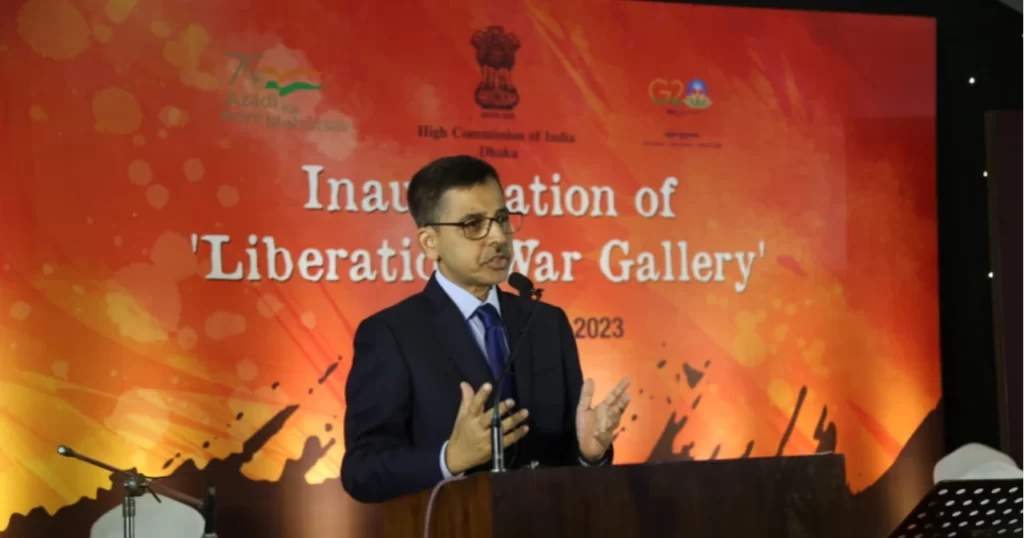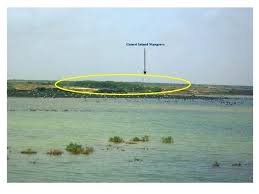New Liberation War Gallery Inaugurated at Indian Cultural Centre in Dhaka
The Indian Cultural Centre in Dhaka recently inaugurated a new Liberation War Gallery, showcasing historical artifacts and photographs related to Bangladesh’s Liberation War of 1971. This significant development aims to strengthen the cultural ties between India and Bangladesh and commemorate the sacrifices made during the war for independence.
The gallery, located at the High Commission of India premises, features a wide range of exhibits that depict the heroic struggle of the Bangladeshi people against the oppression of the Pakistani regime. The artifacts include weapons used by freedom fighters, personal belongings of martyrs, letters, photographs, and audio-visual displays, providing a vivid portrayal of the events that unfolded during the war.
The inauguration of the Liberation War Gallery holds immense importance for students preparing for government exams, particularly those aspiring for civil service positions like the PSCS to IAS. It allows them to gain a deeper understanding of the historical context and the significance of the Liberation War in the socio-political landscape of Bangladesh and its impact on the relations between India and Bangladesh.
The gallery serves as a valuable resource for students studying history, international relations, and defense-related subjects. It offers an opportunity to explore the bravery, determination, and sacrifices of the freedom fighters who fought for Bangladesh’s independence. By examining the exhibits, students can enhance their knowledge of the Liberation War, which often features as a relevant topic in government exams.

Why this News is Important:
Preserving History and Strengthening Cultural Ties
The Inauguration of the new Liberation War Gallery at the Indian Cultural Centre in Dhaka holds immense importance for multiple reasons.
- Commendable Effort to Preserve History: The gallery showcases historical artifacts and photographs related to Bangladesh’s Liberation War of 1971. By preserving these items, the gallery plays a crucial role in safeguarding the historical memory of the war and honoring the sacrifices made by the Bangladeshi people.
- Strengthening India-Bangladesh Cultural Relations: The inauguration of the gallery signifies the commitment of both India and Bangladesh to strengthen their cultural ties. It serves as a platform for cultural exchange and understanding between the two nations, fostering a deeper sense of friendship and cooperation.
- Educational Significance: The gallery provides a valuable resource for students, especially those preparing for government exams. It offers them an opportunity to learn about the historical context and significance of the Liberation War, enhancing their knowledge and understanding of this pivotal event in Bangladesh’s history.
Historical Context:
Background of the Liberation War of 1971
The Liberation War of Bangladesh in 1971 was a major armed conflict between East Pakistan (present-day Bangladesh) and West Pakistan (present-day Pakistan). The war emerged as a culmination of the political and cultural differences between the two regions, ultimately leading to a struggle for independence.
The Bengali nationalist movement, led by the Awami League, demanded greater autonomy and recognition of the Bengali language. However, West Pakistan’s ruling elite refused to address these demands, leading to widespread protests and demonstrations in East Pakistan.
In response to the escalating violence, India extended its support to the East Pakistani freedom fighters and provided them with training, arms, and logistical assistance. This support, coupled with the resilience and bravery of the Bengali people, led to a full-scale armed conflict between the East Pakistani forces and the Pakistani military.
The Liberation War lasted for nine months, with fierce battles fought across various regions of Bangladesh. The freedom fighters, known as Mukti Bahini, employed guerrilla warfare tactics to counter the superior strength of the Pakistani forces. The war witnessed significant military operations, such as the Battle of Hilli, the Battle of Boyra, and the Siege of Dhaka.
On December 16, 1971, the Pakistani forces surrendered to the joint forces of the Indian Army and the Mukti Bahini, leading to the birth of an independent Bangladesh. This victory came at a high cost, with millions of lives lost and widespread devastation throughout the region.
Key Takeaways from “New Liberation War Gallery Inaugurated at Indian Cultural Centre in Dhaka”:
| Serial Number | Key Takeaway |
|---|---|
| 1. | The Indian Cultural Centre in Dhaka inaugurated a new Liberation War Gallery, showcasing historical artifacts and photographs related to Bangladesh’s Liberation War of 1971. |
| 2. | The gallery strengthens cultural ties between India and Bangladesh, commemorating the sacrifices made during the war for independence. |
| 3. | The exhibits in the gallery include weapons used by freedom fighters, personal belongings of martyrs, letters, photographs, and audio-visual displays, offering a vivid portrayal of the events of the war. |
| 4. | The inauguration of the gallery is particularly significant for students preparing for government exams, as it deepens their understanding of the historical context and the impact of the Liberation War. |
| 5. | The gallery serves as an invaluable resource for studying history, international relations, and defense-related subjects, providing a unique learning experience for students. |
Conclusion
In conclusion, the inauguration of the Liberation War Gallery at the Indian Cultural Centre in Dhaka marks a significant milestone in strengthening the cultural ties between India and Bangladesh. It provides students preparing for government exams with a unique learning experience and a deeper understanding of the historical context and importance of the Liberation War.
Important FAQs for Students from this News
Q. What is the significance of the Liberation War Gallery?
A. The Liberation War Gallery is significant as it showcases historical artifacts and photographs related to Bangladesh’s Liberation War of 1971. It helps preserve the memory of the war and honors the sacrifices made during the struggle for independence.
Q. Where is the Liberation War Gallery located?
A. The Liberation War Gallery is located at the Indian Cultural Centre in Dhaka, Bangladesh.
Q. What can visitors expect to see at the gallery?
A. Visitors can expect to see a wide range of exhibits, including weapons used by freedom fighters, personal belongings of martyrs, letters, photographs, and audio-visual displays, providing a comprehensive depiction of the events during the Liberation War.
Q. How does the inauguration of the gallery strengthen cultural ties between India and Bangladesh?
A. The inauguration of the gallery signifies the commitment of both India and Bangladesh to promote cultural exchange and understanding. It serves as a platform for showcasing the shared history and fostering a deeper sense of friendship between the two nations.
Q. How does the Liberation War Gallery benefit students preparing for government exams?
A. The gallery offers valuable insights into the historical context and significance of the Liberation War, which often features as a relevant topic in government exams. Students can gain a deeper understanding of the war, and its impact on the socio-political landscape, and enhance their knowledge in subjects like history, international relations, and defense-related topics.
Some Important Current Affairs Links


















